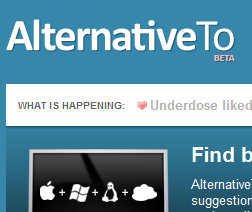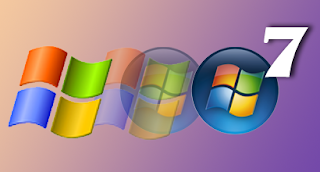 Until just a few weeks ago, I had no eBay experience whatsoever. Since I've been assisting my brother with his somewhat brisk selling activity recently, and being such a quick study with all things Internet, I thought I'd share some of what I've learned.
Until just a few weeks ago, I had no eBay experience whatsoever. Since I've been assisting my brother with his somewhat brisk selling activity recently, and being such a quick study with all things Internet, I thought I'd share some of what I've learned.
Beyond the basic idea of buying and selling on eBay lies a universe of good and bad practices that dictate your rating as a buyer or seller. Some of these things come from eBay rules, and some of them are based on the ratings you receive from other "eBayers" that you conduct business with. I'm going to focus on the interactions with other eBayers.
On the buying end
I've read quite a few complaints in the eBay forums that could have been avoided by the old "caveat emptor" (buyer beware). Searching and locating an item on eBay is easy, buying from a good seller takes some research. First and foremost, check their rating and look at both good and bad comments. You might even go so far as to investigate the commenters' own ratings to validate the claims. If you're not satisfied with the seller's rating, and there are other sellers with the desired item, go with that. If the item is only being offered by one seller with a low or unsatisfactory rating, and you don't want to wait for a better seller to come along, at least prepare yourself for a possibly prickly transaction.
 Investigating the item is just as important. Make sure you read the description and examine pictures carefully. Didn't have all your curiosity satisfied? Ask the seller, and make sure to put all your questions in one message instead of several. No one wants to read a dozen different messages from a single buyer about a single item.
Investigating the item is just as important. Make sure you read the description and examine pictures carefully. Didn't have all your curiosity satisfied? Ask the seller, and make sure to put all your questions in one message instead of several. No one wants to read a dozen different messages from a single buyer about a single item.eBay is serious about buyers and sellers sticking to the Pay Pal transactions. They offer Buyer Protection with Pay Pal, which is to your benefit as either a buyer or a seller. Don't try to persuade the seller to conduct the transaction "Off eBay" by offering cash or money orders. That's what Craigslist is for.
Another thing: Be quick with your payment. You've won the auction by being attentive to the time frame, so it doesn't make a whole lot of sense to dawdle for a few days before paying.
Be a good seller
Honest and above-board selling practices should be a no-brainer, since you can't sell on eBay until you've gotten your feet wet with a few purchases (and experiencing the process), but there are plenty of folks with poor memory or careless treatment of others.
 Pre-plan your listing so the information is accurate and effective. The listing title should have the item name and (if space allows) a word or two to call attention to condition, rarity, or some other selling point. Make a draft or two of your description; keep it relevant and only as long as it needs to be...it's not a creative writing exercise, it's an advertisement. Your pictures of the item are also very important. Take the best photos you can, make sure they are well-lit, in focus, and show good detail. Examine the photos carefully before you put them in the listing. Make sure to examine them in smaller size too, since pictures are reduced in the upload/insertion process.
Pre-plan your listing so the information is accurate and effective. The listing title should have the item name and (if space allows) a word or two to call attention to condition, rarity, or some other selling point. Make a draft or two of your description; keep it relevant and only as long as it needs to be...it's not a creative writing exercise, it's an advertisement. Your pictures of the item are also very important. Take the best photos you can, make sure they are well-lit, in focus, and show good detail. Examine the photos carefully before you put them in the listing. Make sure to examine them in smaller size too, since pictures are reduced in the upload/insertion process.Be attentive to bidders and buyers. If someone asks a question, try to respond quickly...their continued interest, as well as your rating, may depend on it. Try not to accept those "off eBay" transaction offers, since eBay frowns on the practice.
Timely shipping is important. Unless your winning bidder or buyer tells you there's no hurry, you should assume there is. You're aware of when your listings end, or when someone has used the Buy It Now option...Don't drag your feet; get it on its way as soon as you can. Sometimes the winner/buyer is local and might want to pick up the item. If you don't mind it, this option should be in the description, with a reminder that even for local pick-ups, the payment should be via Pay Pal.
For all eBayers
The rating you give to fellow eBayers should be fair and accurate. Both buyers and sellers should wait until the transaction is complete and the item is received before leaving the feedback.
Take advantage of the little extras that eBay offers, like adding a few extra photos to a listing, or using their "Listing Designer" to make it stand out. There's also a community on eBay where you can share your experiences and learn from others.
These are just a few helpful suggestions; there are many other things to consider when buying and selling on eBay. To learn more head over to eBay University Learning Center
Read more...
 It's pretty easy. All you have to do is snap a photo of the disorganized/twisted/unkempt cable setup on your computer or A/V equipment and send it to the folks at Optimized Cable Company. If they judge your photo to be the messiest setup, you could win $100 online store credit with them. See all the details on the "Messy Cable" Contest page.
It's pretty easy. All you have to do is snap a photo of the disorganized/twisted/unkempt cable setup on your computer or A/V equipment and send it to the folks at Optimized Cable Company. If they judge your photo to be the messiest setup, you could win $100 online store credit with them. See all the details on the "Messy Cable" Contest page.


















 Are you ready for a new kind of networking where you connect based on things you like? It's called Likaholix, and it's becoming quite popular because most of us like to talk about the things we like.
Are you ready for a new kind of networking where you connect based on things you like? It's called Likaholix, and it's becoming quite popular because most of us like to talk about the things we like.

 I joined Twitter Yesterday, and after finally taking the plunge I'm very glad I did.
I joined Twitter Yesterday, and after finally taking the plunge I'm very glad I did. 













